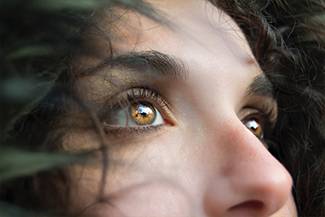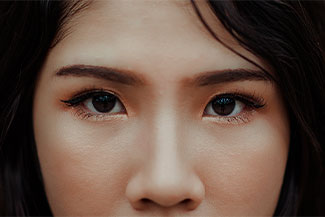
Digital Eye Strain and Dry Eye Syndrome
Dry eye syndrome is a condition characterized by chronic eye dryness and reduced quality of the eye’s tear film. Several factors can lead or contribute to dry eye syndrome, including genetics, age, environment, medical conditions and computer use.
Symptoms of dry eye syndrome include:
- Red eyes
- Dry eyes
- Irritated eyes
- Blurred vision
- Painful or stinging eyes
- Light sensitivity
- Mucus around the eyes
Below, we explore what digital eye strain is, how it relates to dry eye syndrome and how a dry eye optometrist can provide relief.
What is Digital Eye Strain?
Digital eye strain, otherwise known as computer vision syndrome, refers to a group of symptoms that affect both vision and ocular health after prolonged use of a digital screen (phone, tablet, computer, television, hand-held video game devices).
Someone with digital eye strain may experience one or more of the following symptoms:
- Blurred vision
- Headaches
- Neck and shoulder pain
- Dry eyes
- Strained eyes
Digital eye strain is often caused by one or a combination of several factors:
- A poorly lit environment
- Poor posture while using a digital device
- Uncorrected vision or eye problems
- Glare from the screen
- Holding the screen too close to the eyes or at an incorrect angle
- Blue light emissions
- 2 or more hours of continuous screen usage
How Does Digital Eye Strain Contribute to Dry Eye Syndrome?
During the COVID-19 pandemic, there was a rise in cases of dry eye syndrome in places where stay-at-home orders were mandated. This phenomenon led researchers to pinpoint the link between dry eye syndrome and prolonged screen use.
Blue Light Exposure
Blue light is emitted by the sun, indoor lighting and digital devices with screens.
While the amount of energy blue light these devices emit is only a fraction of that in sunlight, many eye doctors are increasingly concerned by the amount of time people spend using these devices and the proximity of these screens to the user’s face.
A 2019 study involving primary human corneal cells in the BMJ Open Ophthalmology found that certain levels of blue light damaged the cells on the eye’s surface, potentially contributing to dry eye syndrome.
However, more research is needed to determine whether the amount of blue light used in studies can harm a person’s eyes.
Another study published in the PLOS One (2016) journal concluded that wearing blue light blocking glasses improved the visual impairment caused by tear instability in patients with dry eye syndrome.
Infrequent Blinking
Another reason screen use can lead to dry eyes is insufficient blinking. People tend to blink less when focusing on text or images on a digital screen, with the blink rate dropping by 66% when using a computer.
Blinking helps keep our eyes healthy and comfortable. With every blink, the ocular surface is cleaned of debris and lubricated, so less blinking means more irritation and dryness.
In 2018, researchers from the Northern Clinics of Istanbul conducted a small-scale study involving 30 people who spent 8 hours on the computer per day, and 30 people who spent 1 hour on the computer per day. They found that the prolonged use of a computer significantly increased the risk of developing evaporative-type dry eye syndrome due to the reduced blink rate.
Incomplete Blinking
An incomplete blink is when the top and bottom eyelids don’t meet during a blink, leaving some of the eye’s surface exposed. This can reduce the quality of the lipid layer in the tear film and eventually lead to dry eye syndrome.
Research published by the American Optometric Association (2014) found that people are significantly more prone to incomplete blinking when reading on a computer screen than when reading from a hard copy.
How To Find Relief From Digital Eye Strain and Dry Eyes
The good news is that there are steps you can take to alleviate some eye discomfort when using a digital device.
- Ask your eye doctor whether blue light blocking glasses can help.
- Make a conscious effort to blink frequently and completely.
- Follow the 20-20-20 rule — when using a digital device, take a break every 20 minutes to focus on an object that’s at least 20 feet away, for at least 20 seconds.
- Reposition your monitor or device to reduce glare, or use a glare filter.
- Adjust your body so that no muscles or joints are strained
- Speak with your dry eye optometrist about a personalized treatment plan for long-lasting relief.
Limiting daily screen time may be unrealistic for some people, but that doesn’t mean you have to live with symptoms of dry eye syndrome. If you or a loved one suffer from dry eyes, we can help.
Call Family Eyecare Center of Optometry to schedule your dry eye consultation today!
Our practice serves patients from Los Angeles, Westchester, Inglewood, and Playa Del Rey, California and surrounding communities.














